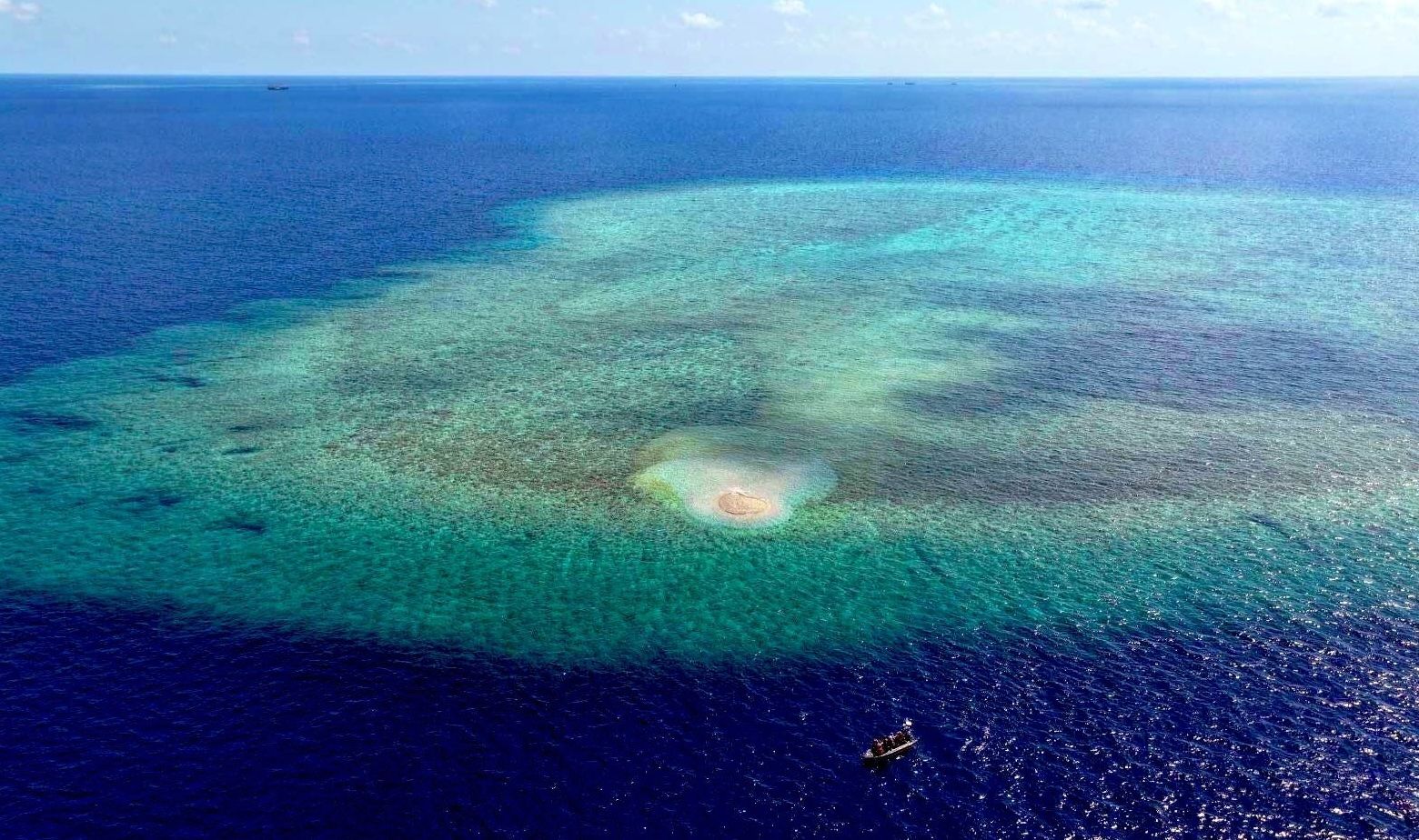Tensions rise as PH, Chinese vessels come face-to-face at Sabina Shoal

Sabina Shoal, or locally known as Escoda Shoal, is slowly becoming the new flashpoint for the Philippines and China’s maritime conflict as vessels from the two countries came face-to-face in the disputed atoll in recent days.
The Philippine Navy (PN) said it has increased its monitoring and patrol in the atoll located 75 nautical miles or 140 kilometers from mainland Palawan after the presence of China Coast Guard (CCG) vessel with bow number “5901”, dubbed as the “monster” as it is regarded as the biggest coast guard vessel in the world.
The 165-meter-long CCG 5901 has been in Sabina Shoal since July 30.
It is being accompanied by a Chinese research vessel “Ke Xue San Hao”, which has been in the atoll in the past two weeks, crisscrossing the vicinity waters of Sabina and raising the alarm bells of the PN.
“It has been doing an illegal rather a zigzag pattern close to Sabina and the southern part of Sabina shoal. We have informed the appropriate agency about this, we have check with DFA [Department of Foreign Affairs], no request for survey has been filed by that ship,” said PN spokesperson for West Philippine Sea (WPS) Rear Adm. Roy Vincent Trinidad on Tuesday, Aug. 6.
Ke Xue San Hao came from Panganiban (Mischief) Reef, a low-tide atoll located 135 nautical miles or 250 km from Palawan, which had been militarized by China in the early 2000s.
However, Trinidad dismissed insinuations that the Philippines and China had a standoff in Sabina Shoal.
“It’s not a standoff. What happened is that because of our monitoring of the unusual pile up of crushed corals, the Philippine government deployed a ship to monitor the activity there,” Trinidad said.
Creeping invasion
The Philippine Coast Guard (PCG) deployed its biggest ship, the 97-meter long BRP Teresa Magbanua (MRRV-9701), to Sabina Shoal on April 18 to guard against suspected dumping of dead and crushed corals on the sandbars of the shoal, as if there was an attempt for a reclamation in the area. It has never left the area since then.
China then deployed CCG’s monster ship to the area to match the Philippines’ move, in what the PN and PCG consider as a tactic to intimidate BRP Teresa Magbanua so it would leave.
Trinidad said that PN ships and aircraft challenge all foreign vessels in Sabina Shoal while they leave it up to the PCG for the enforcement of maritime law.
The navy spokesman said he is not worried that China would “occupy” Sabina Shoal despite the presence of a research vessel and a monster ship there.
“It will take more than one ship for them to do that,” Trinidad said. The PN official assured that they were regularly patrolling the area although he refused to divulge how many ships and what type of vessels they have deployed in Sabina Shoal for security reasons.
From 2011 to 2013, Trinidad said that China has reclaimed around 3,000 hectares of land within and outside the Philippines’ 200-nautical mile exclusive economic zone (EEZ), including in Panganiban Reef, Subi (Zamora) Reef which is about 12 to 15 nautical miles from Pag-asa (Thitu) Island, and Mabini (Johnson South) Reef which is also located within the EEZ.
“The major bases, Subi, Mishcief, Johnson are already militarized. They have airstrips, they have harbors for warships, there are structures on land that we can only surmised are aircraft hangers, they have military grade communications equipment,” Trinidad said.
“Is there is a creeping invasion? Yes, and this has begun since 1992, since we started noticing Chinese markers in the expanse of the West Philippine Sea and the South China Sea,” he added.